Description of the ACW
About ACWs found in China
 |
75 mm shell 5~6 kg |
 |
90 mm mortar shell 5~6 kg |
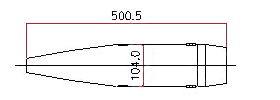 |
105 mm shell 16 kg |
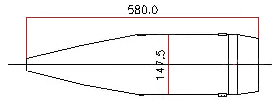 |
150 mm shell 32 kg |
| Agent type | Designation in Former Japanese Army | Name of the chemical |
|---|---|---|
| Blister agent | Yellow | Mustard, Lewisite |
| Pulmonary agent | Blue | Phosgene |
| Blood agent | Brown | Hydrogen cyanide |
| Vomiting agent | Red | Diphenylcyanoarsine (DC), Diphenylchloroarsine (DA) |
| Lachrymatory agent | Green | Chloroacetophenone |
| Smoke agent | White(*) | Trichloroarsine |
* White (smoke agent) was used in a mixture with Blue (pulmonary agent).
The characteristics of ACW in China
- There are various types of ACWs containing different types of agents including Yellow (blister agent) and Red (vomiting agent). Many of the agents contain arsenic.
- Those chemical agents are contained in shells, bombs, toxic canisters or drum containers.
- Chemical shells and bombs use picric acid as a booster and/or burster charge.
- Excavated and recovered ACWs are corroded and/or deformed after a long period of being buried in the soil.
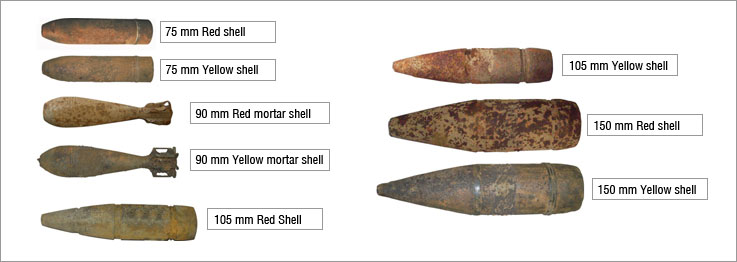
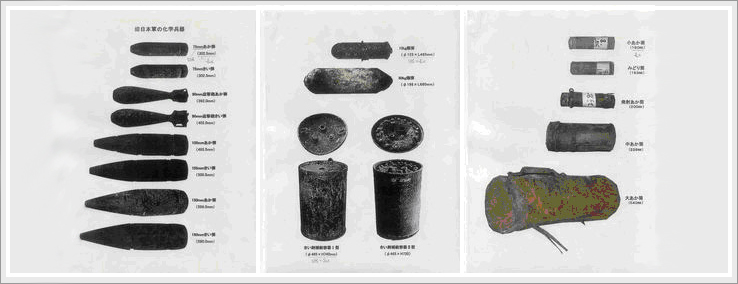
ACWs excavated in China
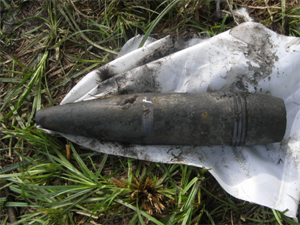
An 105 mm Yellow shell found during the Aug. 2007 excavation and recovery in Lianhuapao (forest areas), Dunhua City
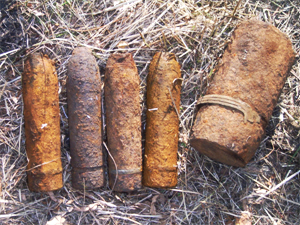
Four 75 mm Yellow shells and a 105 mm Yellow shell (part) found during the Sep. 2006 excavation and recovery in Lianhuapao (forest areas), Dunhua City
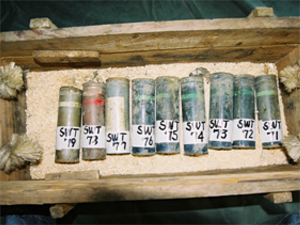
Toxic canisters found during the Sep. 2002 excavation and recovery in Sunwu.
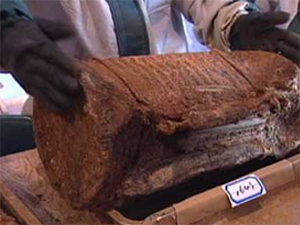
An Extra-large 1 Type 99 Red canister found during the Nov. 2001 excavation and recovery in Nanjing
